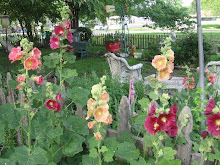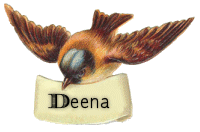A bit about the Singing Woods
This is our backyard at the edge of Singing Woods.
Owned by the Peoria Park District, Singing Woods is nearly 1000 acres of wooded river bluff. It also includes several hill prairie restoration areas. Although there are no developed access it provides important migratory and breeding habitat for forest interior birds.
Sheer size makes this among the best areas to search for migrating songbirds in spring and fall. Barred, Eastern Screech, and Great Horned Owls are also common in winter. Since this is an undeveloped area, with few trails, and steep bluffs plan your hike accordingly. The area along the creek, off of Ivy Lake Road if the most productive during migration. The upland wooded bluff and hill prairies can be good for finding breeding woodland birds.
Commonly Seen Birds Spring/Fall -- Good for woodland warblers
Summer -- Red-headed & Pileated Woodpeckers, nesting owls, Cooper's Hawk, Worm-eating Warbler, Kentucky Warbler, Ovenbird, Louisiana Waterthrush, Scarlet and Summer Tanager
Winter -- Owls
This is some info I found in the "minutes" of Illinois Wildlife Preservation meeting
Peoria Co. - Singing Woods Nature Preserve, Dedication Singing Woods is part of the 899-acre North Bluff Wildlife Preserve, owned and managed by the Peoria Park District. The Peoria Park District proposes to dedicate 694 acres of oak-hickory forest, interspersed with hill prairie, barrens, wetland seeps, and intermittent streams, as Singing Woods Nature Preserve. The natural communities of Singing Woods are representative of the Grand Prairie Section of the Grand Prairie Natural Division. Singing Woods is part of a corridor of large tracts of woodlands (known as the Peoria Wilds Resource Rich Area) within the bluffs overlooking the Illinois River Valley, north of Peoria. This site is the largest contiguous tract of oak-hickory forest in Illinois, north of the Shawnee National Forest. Singing Woods supports a diverse population of high sensitive and moderate sensitive forest breeding birds such as the Ovenbird, Hooded Warbler, Black-billed Cuckoo, Scarlet Tanager, and Louisiana Waterthrush. The state-threatened downy arrowwood (Viburnum molle ) is found at two separate locations within the proposed preserve, as are a vast array of conservative prairie and woodland plants.





















































1 comment:
Oh Deena! No wonder it's called Singing Woods with all the birds around! I enjoy hearing about your birds and seeing all your bird pictures.
Lana
Post a Comment